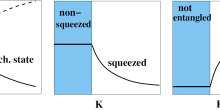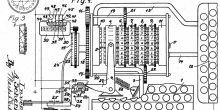This week I had a look at quite some articles concerning quantum computers. To my frustration, the interesting part of all those articles was accessible only for subscribers of the corresponding platforms, from science platforms to newspapers. On one side I can understand it, but I have to admit it is also a little bit frustrating.
Thankfully the Network Pages is an open-access science platform so I thought to start looking around on my own and make a short blog post about my findings. I am far from an expert on this topic, just a hobby scientist, so for the technical details, I just give some links for further reading. Don't be intimidated by some technical terms, I also don't fully understand them but I think it is nice to have seen them once just to know what we are talking about.
The story goes as follows, during the last couple of decades many scientists, universities, and tech giants like IBM, Microsoft, and Google have invested largely in building this advanced machine called a quantum computer. Such a computer will be able to perform quantum computations, which rely on qubits instead of ordinary bits. The major challenge when you want to use such a qubit is that it is very unstable, and stable qubits are essential to have a proper quantum computer. If you are interested to see how quantum computations work I think you will enjoy watching this video.
The Netherlands has also invested a significant amount of resources into research on quantum computing, both on the engineering part, with the program QuTech, but also on the theoretical aspect of quantum software, with the program QuSoft.
In 2018 a team of researchers from the Netherlands and the USA published an article in Nature about a promising technique providing a possible solution to this instability of qubits, the name of it is "topological quantum computing". This is one of the terms I talked about in the beginning, I have no idea what it exactly is but it has gotten a lot of attention recently. By construction this technique would yield stable qubits, if it could be successfully implemented of course. The following short video (the formulas in the video are not so relevant for this post, they are just part of the formal description of the technique) gave me some insight into how this technique works.
Unfortunately, a couple of months ago the authors had to retrieve their publication due to new evidence revealing a problem in their analysis. This is definitely unfortunate but is also part of the game. Nevertheless, I think it is nice to learn some more about this modern line of research. Let's have a look at what this technique tried to accomplish.
The researchers in the Nature-article claimed that the key to successfully implement topological quantum computing, which was already described theoretically in 2005, lies in an elementary quasi-particle called the Majorana-fermion. These fermions can't exist on their own in space but only in interacting many-particle systems, hence they are not actual particles, but quasi-particles. When I read about this I got curious about this fermion which I've never heard of, so I started searching, mostly in Wikipedia to be honest, and not in the rather technical scientific reports.
I was amazed to read that a Majorana-fermion, whose existence was hypothesized by the Italian scientist Ettore Majorana in 1937, is a fermion with the astonishing property that it is its own antiparticle. This stroke me because since school I always thought that particles and antiparticles are always kind of dual, electrons have a negative charge while a positron is a copy image of its negative-brother with the only difference its charge is positive. The Majorana-fermion is thus in some sense an exception to this rule and has zero charge. If you want to read more about this you can have a look at Wikipedia, I am omitting more details in favor of the next step in my story, namely, how do researchers know that this fermion actually exists? And how is it related to quantum computers?
On the Dutch Wikipedia site on the Majorana-fermion it is discussed how it was experimentally observed. Below I translate the passage from Wikipedia. You can read a similar paragraph in the corresponding English Wikipedia-site, but a couple nuances mentioned in Dutch are not mentioned in the English site, see the blue part below.
"An intensive search to experimentally observe Majorana-fermions in superconductors led to the first results in 2012. In April 2012, a Dutch research group from the Kavli Institute of Nanoscience at the Delft University of Technology in the Netherlands reported an experiment involving indium antimonide nanowires connected to a circuit with a gold contact at one end and a slice of superconductor at the other. When exposed to a moderately strong magnetic field the apparatus showed a peak electrical conductance at zero voltage that is consistent with the formation of a pair of Majorana bound states, one at either end of the region of the nanowire in contact with the superconductor. The bound states remain stable when the magnetic field and voltage are greatly varied. These are not elementary particles, but so-called quasiparticles, a group of particles (here electrons and electron holes) that in certain respects behave like a single particle. These Majorana quasiparticles could be very stable, and therefore well suited for building a so-called quantum computer."
Hence the aspiration was that these Majorana-fermions would make topological quantum computing work, unfortunately, reality seems more subtle than what the authors described in the Nature-article and had to withdraw the article.
The conclusion of my story, well, research has its ups and downs, many times brilliant ideas just don't work. Mistakes are not unknown to science, thankfully the scientific community can filter all these problems out by critically assessing the results being published. And many times this critical attitude leads to new ideas. In the meantime, for us the outsiders, we follow the developments and try to learn as much as possible. This is definitely a story that has not ended yet and more fascinating results are going to appear.





